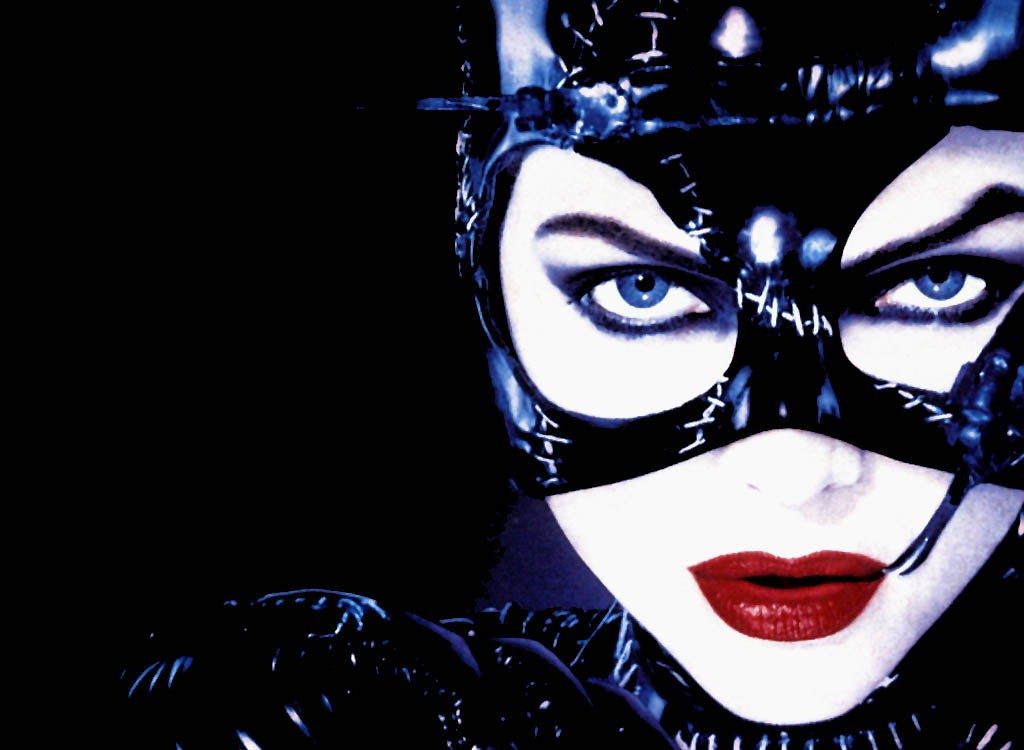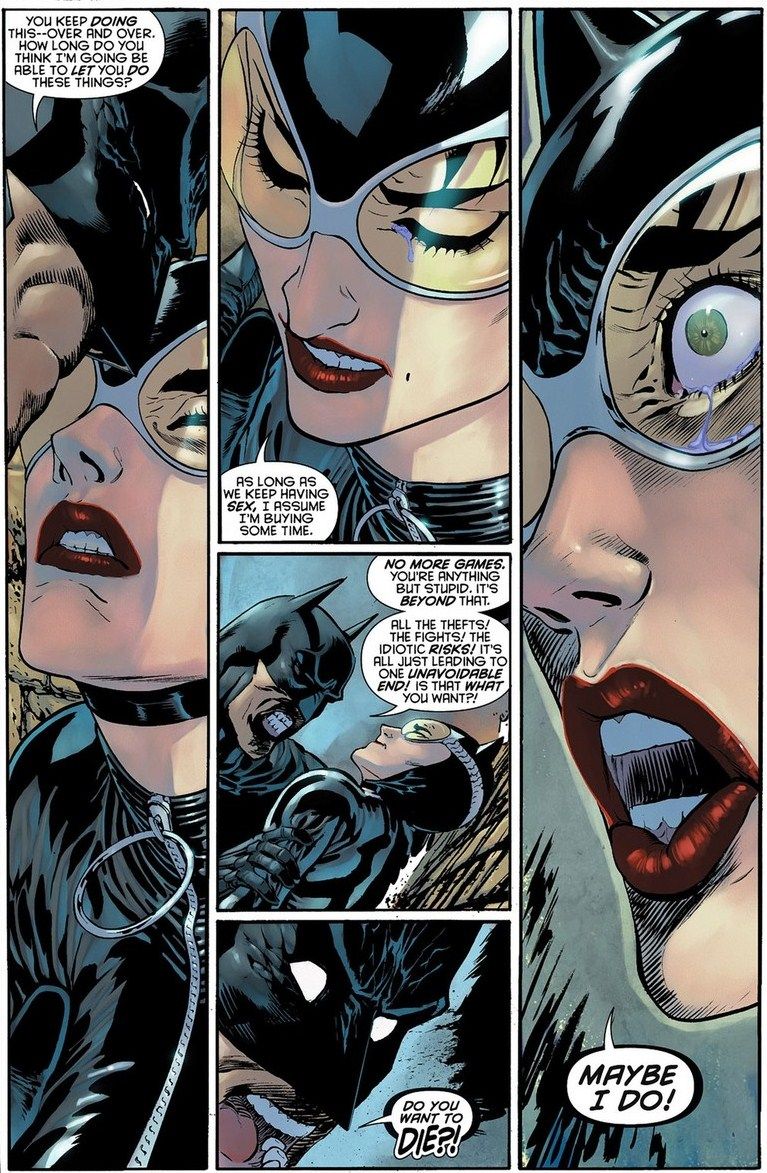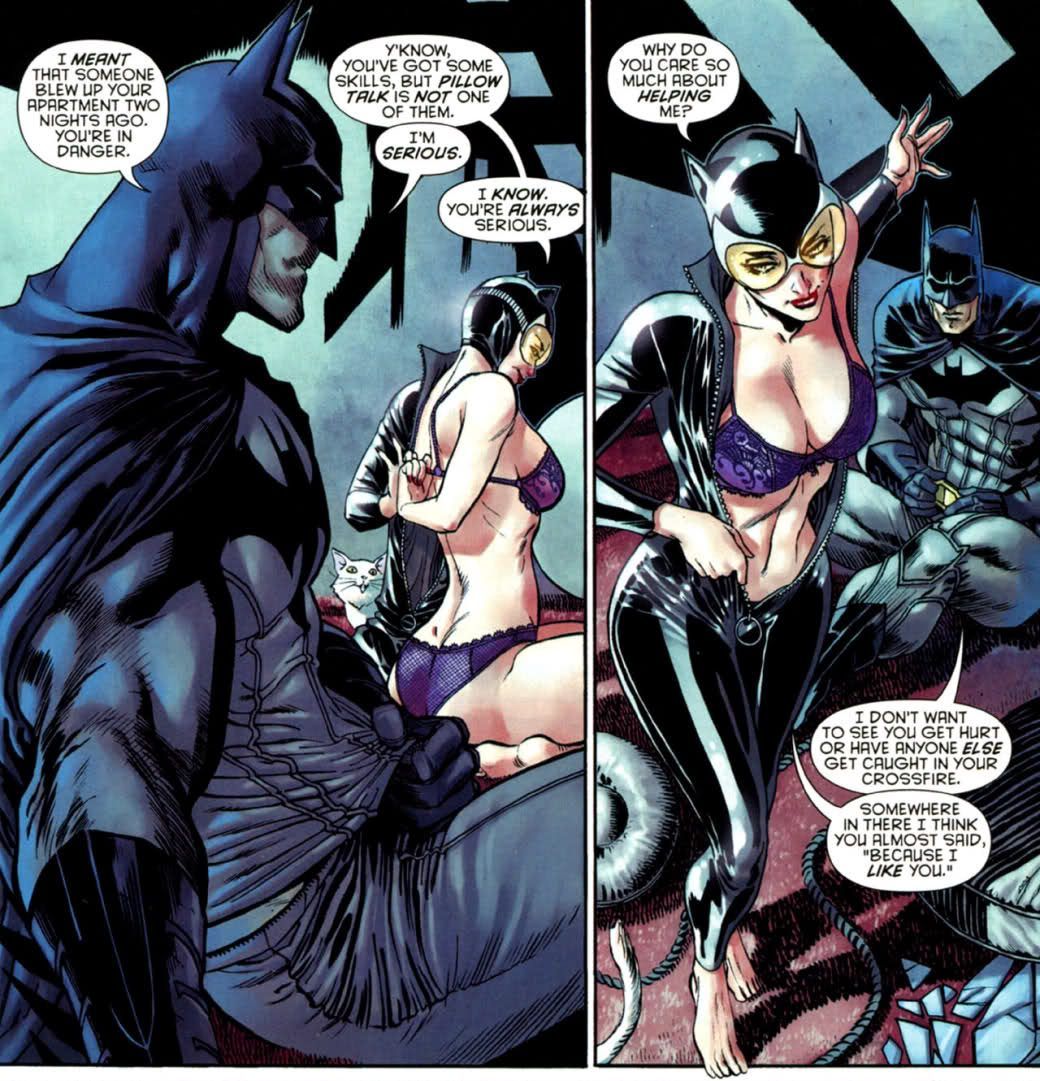The Grumpy Old Fan/Women of Action crossover continues. In our first installment, Tom and I agreed that there are some interesting things going on in Catwoman and tried to fit Winick's characterization into the context of Catwoman's history (or rather, our limited understandings of Catwoman's history). When we left off, I was trying to decide whether or not I trust Judd Winick to be telling The Last Self-Destructive Catwoman story and take the character into a positive direction. As we pick up, Tom helps me with that.
TOM: I agree that the '60s TV show was a big influence on the character's perception, although I'm not sure how much it really changed in the comics. There is certainly a lot of "crazy" in Michelle Pfeiffer's 1992 Batman Returns performance, and I think a lot of that is an extension of the TV show more than, say, taking off from Batman: Year One. Maybe that's part of what we're seeing in the current series' self-destructive aspects, although that could just be a coincidence.
That's a good point about Gail Simone's "Last Hostage Story," and it would be a good time for the New-52 Catwoman to break out of a downward spiral. Selina's flashes of extreme violence are presented as outbursts of deeply-repressed rage, like she's ultimately mad at the world for trying to take away what she perceives as having gotten fairly. She talks herself into spending easily-traceable cash because she figures she deserves it, even though she knows she's flirting with disaster. Similarly, in #6 she tells Batman she's earned that money, and besides it would just go to very bad people. Conversely, when Bone tells Catwoman his own philosophy, she really lets him have it, because he killed her friend for daring to steal the property he prized so highly. For all her talk about "earnings," she really does value her relationships more, but it's almost like she doesn't think she deserves them and ends up trying to satisfy herself materially (and sexually with Batman, of course). That's a lot of emotional baggage to unpack, although from an historical perspective it makes this Catwoman less mature.
Anyway, the violence: as with issue #1's sex scene, I didn't really need to see Selina bite off Reach's ear in issue #6. I suppose that shows us just how far gone Selina was at that moment, and it was arguably in keeping with #1's eye-gouging, #3's baseball-bat-beating, and #5's fight, but maybe a little more discretion was in order. Actually, I say "maybe" without much sarcasm, because to me -- as bad as it sounds -- the violence almost needs to be as explicit as the sex, both to show their "importance" in Selina's life and so that one doesn't overwhelm the other. These six issues show an arc full of extremes (in the classical sense, not the '90s sense), because that's where Winick and March have put Selina. Contrast page 2 of issue #6 with the last panel of the last page. In both, Selina is wearing only her catsuit, sitting barefoot with her knees pulled up to her chest. On page 2, it's because she's in police custody, her gear's been taken from her, and her hands are cuffed behind her back. There she's trying to maintain a defensive pose, staring at the world with bug-eyed defiance. She's vulnerable physically and trying to stay composed mentally. On the last page, though, it's the opposite: having taken off her gear herself, her outward vulnerability shows Gwen she's ready to open up inwardly, and her pose is more relaxed as a result.
I guess what I don't like about Catwoman is that it presents our heroine bouncing between those extremes. We know she's hypercompetent -- she steals priceless paintings from the Russian mob, she tricks warring gangsters into going after each other, and she saves herself from a half-mile-high plummet -- but we see her constantly at the mercy of others, from Bone's men to the Russians to Reach and the corrupt cops. There's no grounding, not even in relationships, because she blames herself for Lola's death and has attachment-free Bat-sex. It's an unsustainable pattern, and as you say, it doesn't exactly inspire confidence in future storylines.
On balance, though, I guess I'm a little more optimistic about the book's direction. Besides, dropping it would probably have to wait until after "Night of the Owls"....
MICHAEL: I'm a little frustrated by the idea of another inter-title crossover this soon after the relaunch, so it's probably best that I jump ship before "Night of the Owls" anyway. My experience with reading Catwoman has reminded me of a few relationships I've had with self-destructive people. It's an awful feeling to care about someone who doesn't care about herself (or himself, as I've also experienced). To watch helplessly as that person makes bad choice after bad choice is heartbreaking and an impossible position to stay in. Not that walking away is any easier; not if you truly love the person.
Fortunately for me, I don't love Catwoman; especially not this version. I'm concerned about her the way I'd be concerned about anyone with her problems and personality, but I don't have a relationship with this character. And that brings up something interesting, because neither do the new readers this reboot was designed to bring in. Like us, these are people who are aware of Catwoman from her pop culture status via Julie Newmar and Michelle Pfeiffer (good catch, bringing her version into this discussion) and the odd appearance in an old Batman comic, but these aren't long-time fans with a ton of commitment. Maybe they don't have the baggage that I do of having been through similar relationships in real life. Maybe my tolerance is atypically low for this kind of thing.
I don't mean to make it sound like Catwoman triggered some kind PTSD episode for me, but it has hit closer to home than I think I want to deal with in a superhero comic, especially since I'm not sure about how seriously Winick intends to take it. With another artist, I'd be more inclined to ride it out, but March - as effective as he is at conveying some wrenching emotions - has a glossy, bubblegum style that feels insincere. Add to that Winick's early comments about the series' "taking her back to the core of what Catwoman is" and defining that as: "She’s beautiful, she’s dangerous, she’s addicted to danger, she’s addicted to being a criminal." That's from an interview before the first issue even hit, so it's possible that Winick's leaving out spoilers about Catwoman's eventual attempt to beat those addictions. But if we take his comments at face value, he's suggesting a) that this addiction is a core part of Catwoman's personality and b) that his run intends to celebrate that. And while I agree with the former statement, the latter one doesn't bode well for her future recovery.
"Celebrate" is my word and not Winick's, but I think it accurately describes the tone he puts forth in that interview. So it's really confusing to me if Catwoman is supposed to be a fun comic about a zany cat-burglar who loves danger. It's so not. It's a disturbing, voyeuristic comic about a woman who's out of control. Even though I don't want to read that comic, I'll defend its existence, but it's upsetting to hear that marketed as, "Yeah, she dresses up like a cat, she’s a cat burglar, she steals things, and she’s really crazy sexy."



